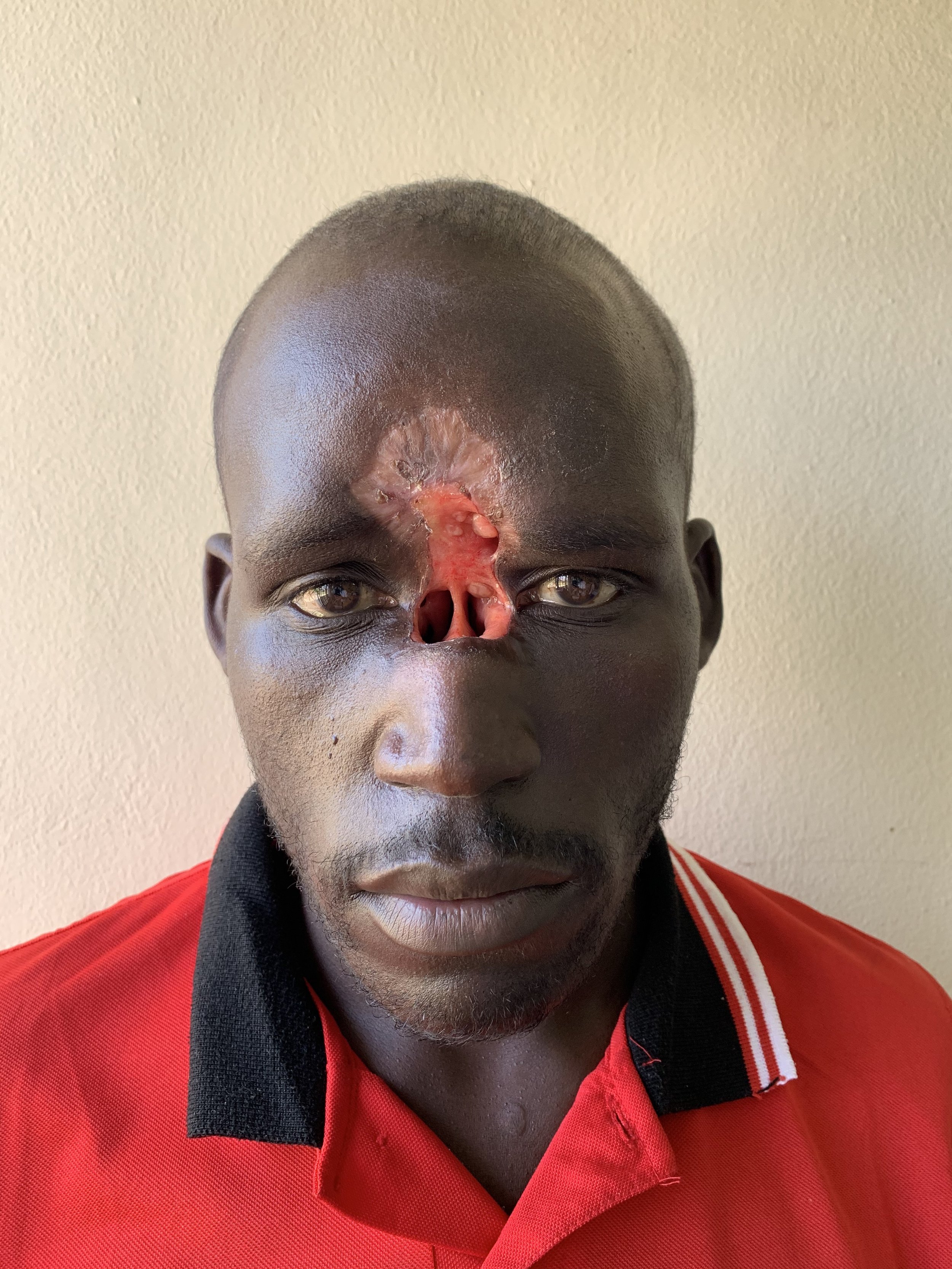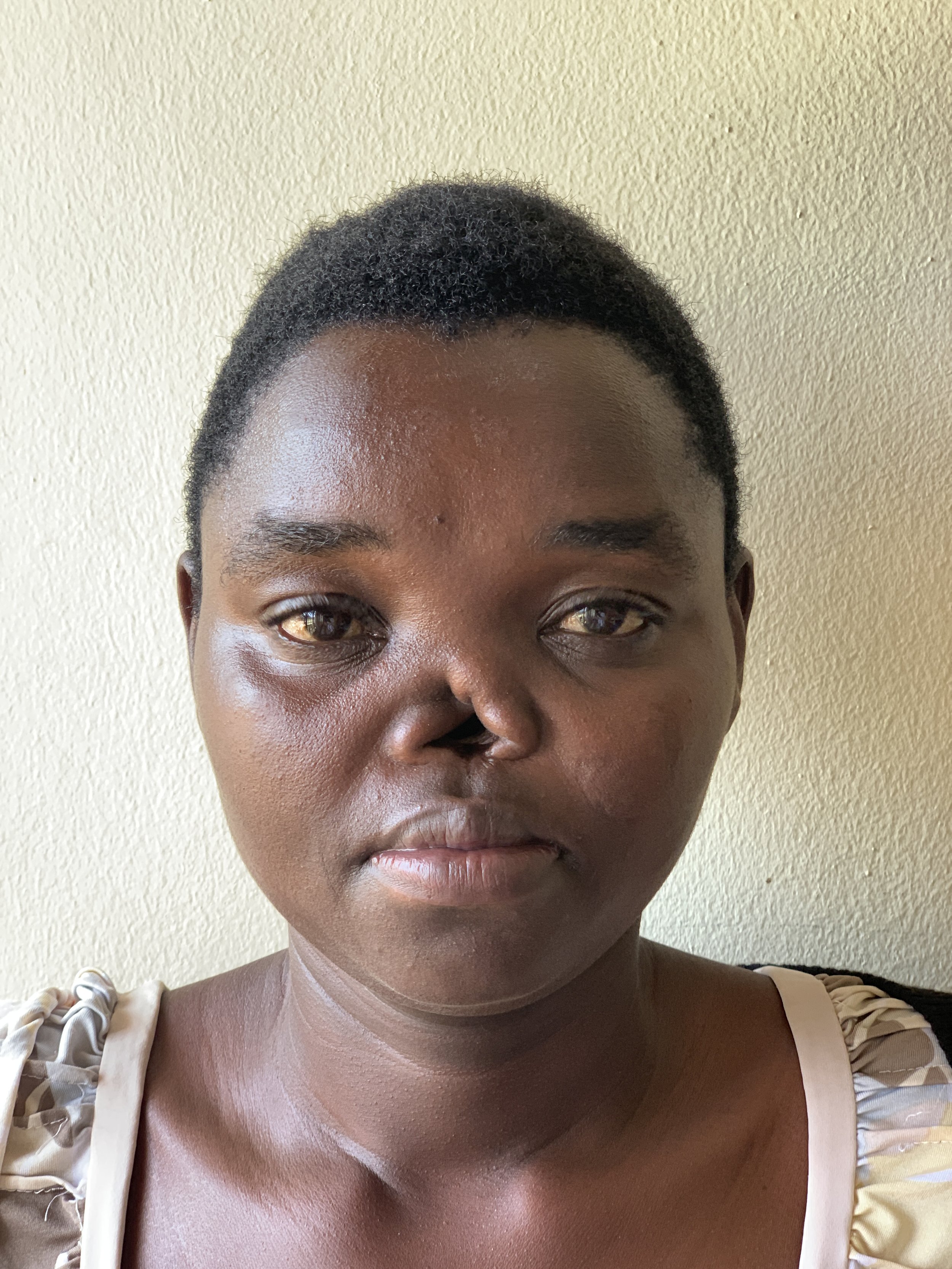Changing Lives
Surgery can change someone’s life. These patients have chosen to share their stories.
Please note, you have to click “Watch this Video” before viewing. Youtube has the video age-restricted because of the content.
This video is Hirwa’s story.
Hirwa
Hirwa is an 11 year old boy who lived for many years with an enormous tumor on his neck. He was ostracized at school and other children sometimes would not play with him. Due to financial barriers, it was difficult for his father to save up the money to arrive at the public hospital. Once he did, Hirwa’s neck mass presented an enormous surgical challenge. It was displacing his shoulder, descending into his lung, and spanned the entire front and back of his neck. The tumor abutted the carotid artery and jugular vein.
A team of head and neck surgeons prepared carefully for his surgery. Preparations were made to possibly cut through the collar bone to be able to remove it. During the surgery he had to be turned over to be able to remove the entire mass. The surgery was performed successfully and Hirwa recovered well.
When asked what he was most excited to do after surgery, Hirwa said he wished to help his father collect firewood for the cooking. One year after surgery Hirwa is free of his tumor and has returned to the life of a child.
Clementine
Clementine was born with a congenital neck mass called a lymphatic malformation. Surgery to remove the mass would be very risky. Sclerotherapy is a way to inject semi-caustic medication into the mass to induce an inflammatory response and eventual resolution. However, sclerosing agents are expensive and not readily found in Rwanda. Treatment for a patient like Clementine may cost several hundred thousand dollars in the United States.
IIn Rwanda surgeons have to be creative. After carefully researching all the various types of sclerosing agents, a Rwandan surgeon identified that a solid form of the medication could be easily and cheaply found. This was not in the formulation for sclerosing, however. Pressed to act, a research trial was performed using hand crushed pills to make the sclerosing agent. After two injections with this agent the child’s neck mass completely resolved. One year later Clementine has not signs of recurrence. A small surgery was later performed to remove the excess skin that was visible. The total cost of the sclerosing agent for Clementine’s surgery was $0.05 cents in total.
This treatment was repeated on 10 other patients like Clementine and then published in the World Journal of Surgery. The method continues to be used today at Rwanda’s University Teaching Hospital.
Marie Clare
Marie lived without a nose for many years. She sustained a human bite injury and was living ostracized from society and with stigma in the foothills of the Viirunga mountains. Surgery to reconstruct an entire nose is complex. Ribs are removed to make the structural support of the nose, and forehead skin is used to replace the previous nasal skin. It is a mix of art and science. The practice of “Nosemaking” dates back to the earliest days of plastic surgery in India, thousands of years ago.
In Rwanda in 2019, Marie underwent 2 surgeries to reconstruct her nose using very similar principles to those practiced thousands of years ago in India. Marie is no longer ashamed to show her face, and has returned to farming in the western part of the country.
Read more about the fascinating history of nasal reconstruction.
Jules
At the age of 15, Jules was unable to breathe through his nose and was suffering from severe nosebleeds. He was eventually diagnosed with a “JNA” (Juvenile Nasopharyngeal Angiofibroma). This is a rare nasal tumor that affects adolescent boys and without treatment is fatal. Like many patients that face poverty, Jules experienced barriers to accessing surgical care. These cause patients to present late, with the disease in an advanced state. Imaging showed the tumor was extensive, and had entered the brain.
In high resource settings, this type of tumor would be removed with the help of embolization to limit bleeding before surgery and radiation to limit recurrence after surgery. Those options were not possible in Jules’ setting.
Jules underwent surgery in Rwanda through an open approach through both his face and through his skull. After 3 years Jules remains tumor free; he is healthy and is an active farmer in his community.
Over the last 5 years, 10 patients like Jules have underwent the same surgery with success and cure in Rwanda.
Janvier
Janvier had cancer of the nose which was treated with surgery and chemotherapy. However, a large defect of his nose left him deformed and ashamed.
Janvier underwent three layered complex reconstruction using one of his ribs and an area of his forehead to reconstruct his nose. He recovered well and has remained cancer free for 3 years. Janvier has returned to farming and spending time with his family.
Angelique
Angelique was born with no nose. She does not know if she was born with this problem or she developed an infection as a child, because she never knew her mother. All her life she has lived with no nose and suffered stigma and teasing. She enjoyed wearing a mask during COVID to hide her face.
Angelique underwent a surgery to reconstructed both the inside and outside of her nose. Rib was harvested and she underwent 2 surgeries in total.
Angelique healed well and has returned to her job as a shopkeeper. She feels much better about herself. After 34 years she is thrilled to show her face in public.













